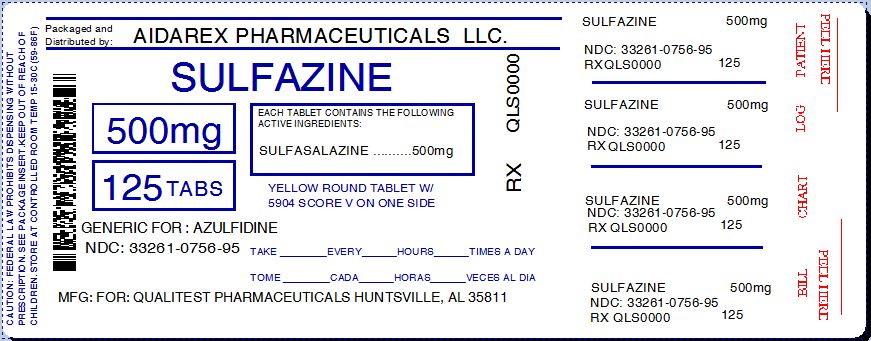
Sulfasalazine Tablet while Breastfeeding
What is Sulfasalazine Tablet used for?
Is Sulfasalazine Tablet usage safe while breastfeeding? If a lactating mother is using it can there be any effect on growth or development of infant?

Nursing Mothers: Sulfonamides, including sulfasalazine, are present in human milk (see Pregnancy, Clinical Considerations). Insignificant amounts of sulfasalazine have been found in milk, whereas levels of the active metabolite sulfapyridine in milk are about 30 to 60 percent of those in the maternal serum. Caution should be exercised when sulfasalazine is administered to a nursing mother. There are reports with limited data of bloody stools or diarrhea in human milk fed infants of mothers taking sulfasalazine. In cases where the outcome was reported, bloody stools or diarrhea resolved in the infant after discontinuation of sulfasalazine in the mother or discontinuation of breastfeeding. Due to limited data, a causal relationship between sulfasalazine exposure and bloody stools or diarrhea cannot be confirmed or denied. Monitor human milk fed infants of mothers taking sulfasalazine for signs and symptoms of diarrhea and/or bloody stools.
Sulfasalazine Tablet Breastfeeding Analsys
Sulfasalazine while Breastfeeding
SafeCAS Number: 599-79-1
Prodrug of Mesalazine: medication compounded by union of Sulfapyridine and 5-ASA which is degraded into Mesalazine by bacteria in the large intestine. Mesalazine is badly absorbed by the intestine, serum levels are low with scant excretion into breast milk. Inactive metabolite N-acetyl-5-ASA was found in small amount in the milk with a relative infant dose not higher than 10%. No harm effects among breastfed infants from treated mothers have been reported, except for rare cases of diarrhea reported in the 80's with the use of Sulfasalazine. In a review of 121 cases and 121 controls, the authors failed to observe those findings. (Moretti, 1989). Expert consensus supports the compatibility of Mesalazine and/or its prodrugs during breastfeeding. Sulfapyridine released in the large intestine is 60% absorbed with a protein-binding capacity of 90%, both being a reason for low excretion into breast milk. Mesalazine derivatives that not contain Sulfapyridine are recommended by some authors for use while breastfeeding (see alternative drugs).
Sulfasalazine Tablet Breastfeeding Analsys - 2
Sulfasalazine while Breastfeeding
CAS Number: 599-79-1
Sulfasalazine and its active metabolite mesalamine are poorly excreted into breastmilk. However, rather high levels of the mesalamine metabolite N-acetyl-5-ASA appear in breastmilk and its effects on breastfed infants are unknown. Another sulfasalazine metabolite, sulfapyridine, also appears in milk and infant serum and might cause hemolysis, especially in newborn infants and in those with glucose-6-phosphate dehydrogenase (G6PD) deficiency. The time of greatest risk for hemolysis in fullterm newborns without G6PD deficiency might be as short as 8 days after birth.[1] Bloody diarrhea has occurred in an infant whose mother was taking sulfasalazine and a few cases of diarrhea have been reported in infants exposed to mesalamine in breastmilk, although the rate is not high. Most experts consider mesalamine derivatives to be safe during breastfeeding.[2][3][4][5][6][7] If sulfasalazine is required by the mother, it is not a reason to discontinue breastfeeding, but carefully observe breastfed infants for diarrhea. Other mesalamine derivatives that do not contain a sulfonamide are preferred.
What should I do if already breastfed my kid after using Sulfasalazine Tablet?
It is always a good idea to keep your healthcare provider or doctor informed about your drug usage during pregnancy and breastfeeding but if you have not informed your doctor about Sulfasalazine Tablet and have used it then do not panic as Sulfasalazine Tablet is mostly safe in breastfeeding and should not cause any harm to your baby.
I am nursing mother and my doctor has suggested me to use Sulfasalazine Tablet, is it safe?
Usage of Sulfasalazine Tablet is safe for nursing mothers and baby, No worries.
If I am using Sulfasalazine Tablet, will my baby need extra monitoring?
No
Who can I talk to if I have questions about usage of Sulfasalazine Tablet in breastfeeding?
US
National Womens Health and Breastfeeding Helpline: 800-994-9662 (TDD 888-220-5446) 9 a.m. and 6 p.m. ET, Monday through Friday
UK
National Breastfeeding Helpline: 0300-100-0212 9.30am to 9.30pm, daily
Association of Breastfeeding Mothers: 0300-330-5453
La Leche League: 0345-120-2918
The Breastfeeding Network supporter line in Bengali and Sylheti: 0300-456-2421
National Childbirth Trust (NCT): 0300-330-0700
Australia
National Breastfeeding Helpline: 1800-686-268 24 hours a day, 7 days a week
Canada
Telehealth Ontario for breastfeeding: 1-866-797-0000 24 hours a day, 7 days a week
